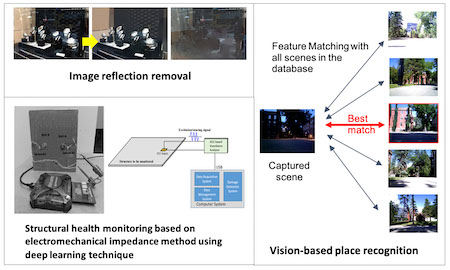Dr Daniel Lun

Dr Lun is a Chartered Engineer, a fellow of IET, a corporate member of HKIE and a senior member of IEEE. His international journals and conference papers focus in the areas of wavelets theory, signal and image enhancement, computational imaging and deep neural networks. He and his research students have also received three best paper awards in international conferences. Dr Lun is active in professional activities. He was the Chairman of the IEEE Hong Kong Chapter of Signal Processing in 1999–2000. He was the General Chair/Co-Chair and Technical Co-Chair of a number of international conferences. He received the Certificate of Merit from the IEEE Signal Processing Society for dedication and leadership in organizing the 2010 IEEE Int. Conference on Image Processing (ICIP). He was the Editor of HKIE Transactions published by the HKIE in the area of Electrical Engineering and also the leading guest editor of a special issue of EURASIP Journal of Advances in Signal Processing. He is currently an Associate Editor of IEEE Signal Processing Letters and IEEE Open Journal of Circuits and Systems.
Research highlights:
In recent years, Dr Lun’s research team focuses on the investigation of deep learning based signal and image processing methods. In their works on 3D object measurement, efficient data-driven fringe projection profilometry (FPP) techniques were developed to improve the robustness of the 3D scanning operation. It was the first time that both the 3D information and 2D texture of the target object could be obtained by a single-shot FPP process. The team also made important contribution to the study of image reflection removal. New multiple-view and single-view image reflection removal algorithms were proposed. In these algorithms, the Wasserstein Generative Adversarial Network was used to effectively regenerate the background gradients for the reconstruction of the background image while removing the reflection image. For the work in vision-based place recognition, discriminative ConvNet features were adopted for the development of a place recognition method that can effectively search the scene database to identify the scene that best matches with the captured scene. The team also applies deep learning technique to structural health monitoring. By analyzing the electromechanical impedance (EMI) signals around a mechanical structure using a Convolutional Neural Network, its health condition can be predicted with an accuracy of over 90%.




